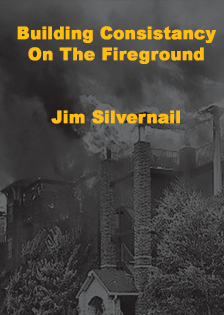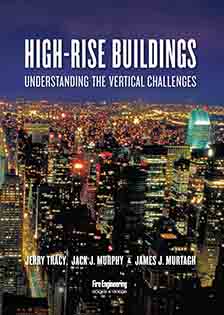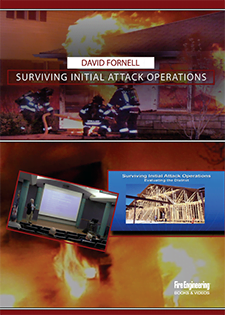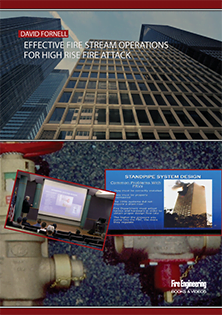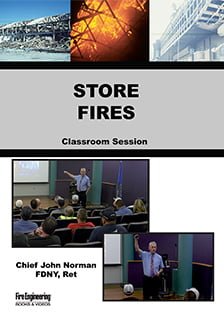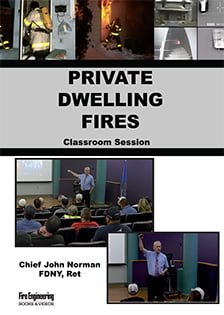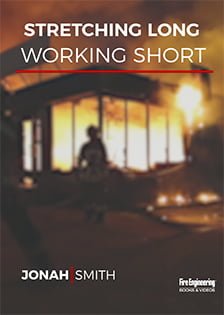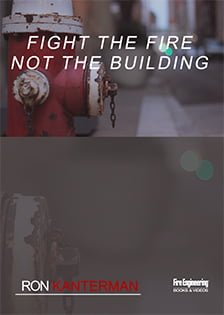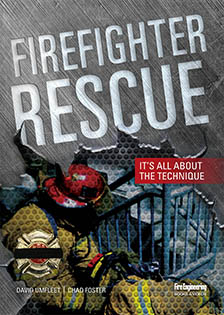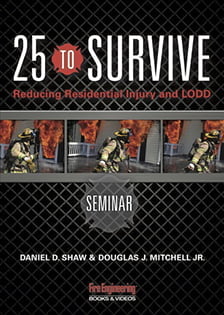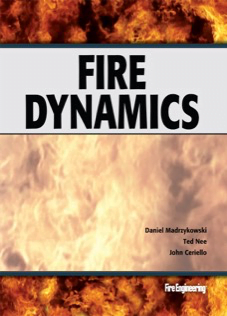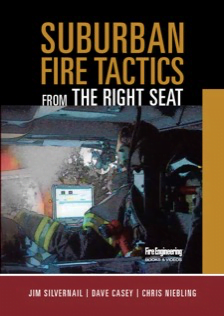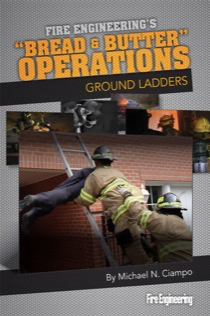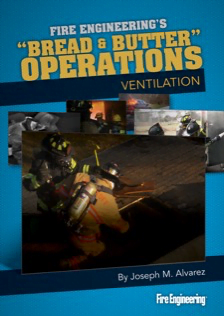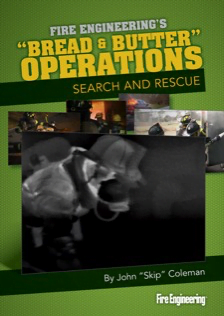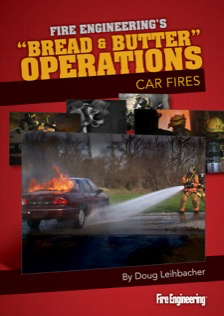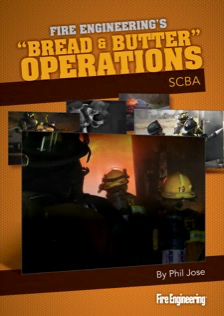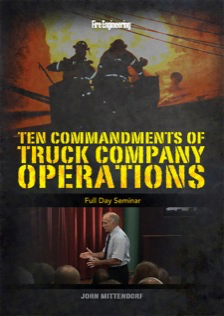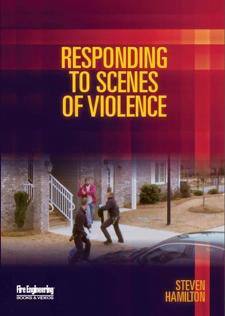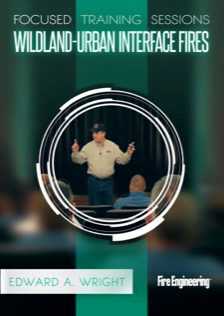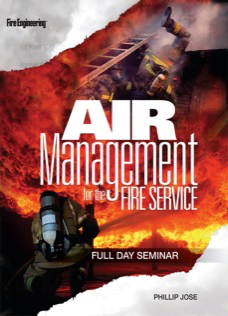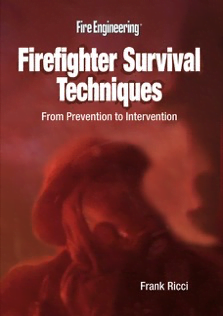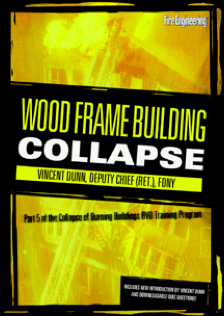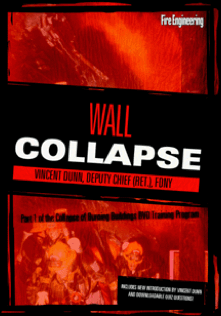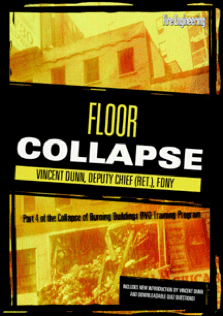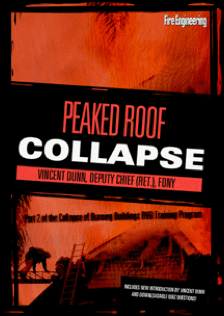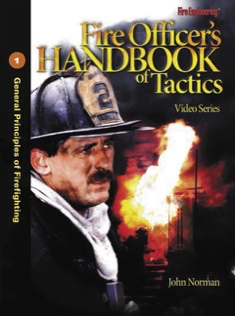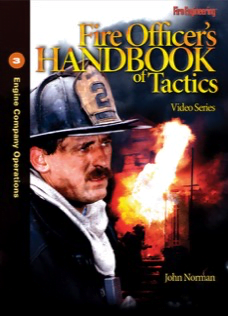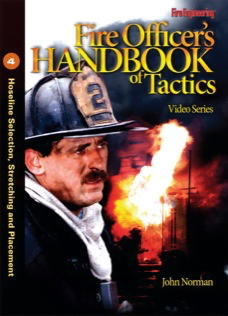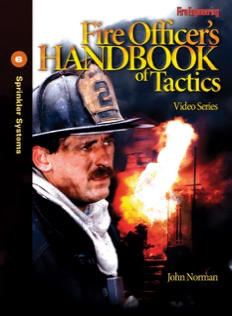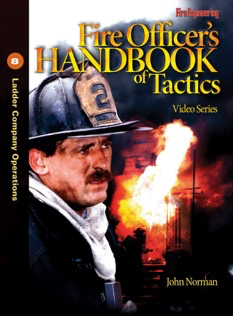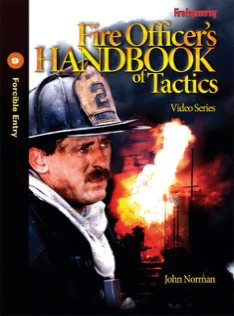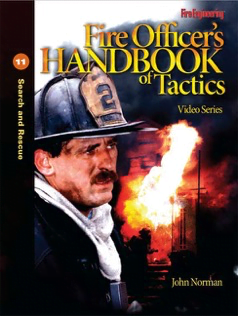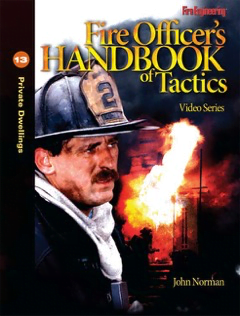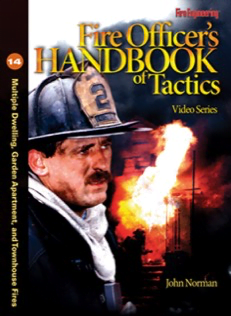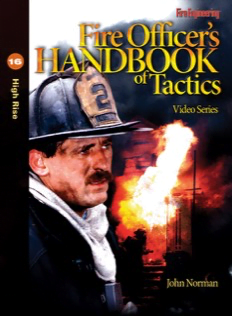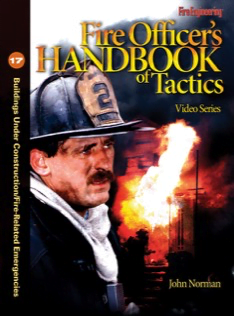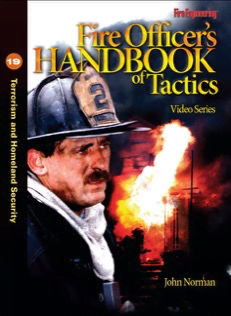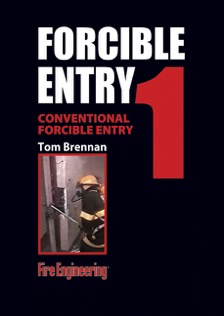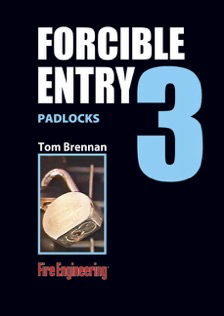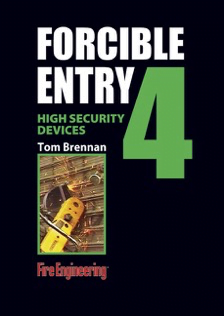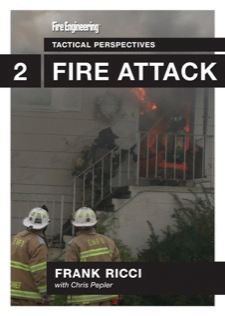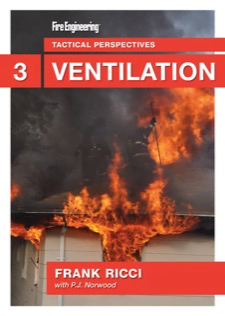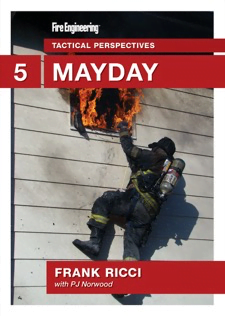In this live presentation, Chief Jim Silvernail discusses fire attack. He delves into size-up, identifying/prioritizing function, and circumstantial implementation. No two fires are the same, so the terms “never” and “always” should be avoided. Chief Silvernail helps to instill the skills and knowledge to make appropriate decisions to get the job done and stay safe in the process.
Chief Silvernail talks about critical fireground principles such as risked based management and discusses the ideal fire attack situation, versus what most fire departments must deal with due to their response capabilities.
Jim Silvernail is the Fire Chief of the Kirkwood Fire Department of St. Louis County, MO and is a graduate of the National Fire Academy EFO Program and is international accredited as a “Chief Fire Officer” (CPSE). He is the author of Suburban Fire Tactics (Fire Engineering Books and Videos, 2013) and the co-author of Suburban Fire Tactics from the Right Seat video (Fire Engineering Books and Videos, 2016). Jim has over 24 years of operational experience and was a lead instructor at the St. Louis County Fire Academy, specializing in truck company operations. He also served as a member of MO-TF 1 (a FEMA Urban Search & Rescue team), serving as a Planning Team Manager.
1 Hour 25 minutes
In this live presentation, Chief Jim Silvernail discusses building consistency on the fireground.
1 Hour 19 minutes
The first five minutes are the most crucial minutes during a structure fire. The decisions and actions that
occur during that time frame can mean life or death to the potential occupants.
In this live classroom presentation Mark van der Feyst and Matt Wehrle delve deeply into these important
minutes. They discuss size-up, information gathering, communication, being ready, and tactical
decisions. They run through a series of scenarios to utilize what was just discussed.
By Mark Van der Feyst and Matt Wehrle
2 Hours, 9 minutes Published 2019
The New Firefight
In this live fire presentation, Chief Peter Van Dorpe takes a look at “The New Firefight”. Utilizing the latest in research, Van Dorpe highlights how to be effective and efficient on the fireground
4 hours and 11 minutes. Published 2018
High-Rise Buildings
Responding to incidents in high-rise and mid-rise structures that feature large dimensions and complex floor layouts can be a daunting task. The sheer size and complexity can overwhelm even the most seasoned fire veteran.
6 Hours and 31 Minutes Published 2018
Initial attack operations can often be fraught with danger and uncertainty. In this video Chief David Fornell discusses the responsibility of the first due. He talks about the four main problems that occur with attack operations, as well as discusses size- up, water issues, and initial operations.
David Fornell is the Deputy Fire Commissioner for the City of Detroit, MI. Fornell has served as chief of the Westchester, Illinois Fire Department, a suburb of Chicago, as well as a company officer for Casstown Community Fire Department, Casstown, OH, and the Beckerle & Company, Hose Company, Engine #9 of the Danbury, Connecticut Fire Department. He is the author of Fire Stream Management Handbook published by Fire Engineering.
1 hour 51 minutes
High rise operations can tax even the most experienced and well staffed departments. In this live presentation, Chief David Fornell walks us though some of the challenges and pitfalls with creating effective fire stream operations in these buildings. Fornell discusses safety, risk, staffing, standpipe operations, and elements of a successful fire attack.
David Fornell is the Deputy Fire Commissioner for the City of Detroit, MI. Fornell has served as chief of the Westchester, Illinois Fire Department, a suburb of Chicago, as well as a company officer for Casstown Community Fire Department, Casstown, OH, and the Beckerle & Company, Hose Company, Engine #9 of the Danbury, Connecticut Fire Department. He is the author of Fire Stream Management Handbook published by Fire Engineering.
1 Hour and 6 minutes
Commercial building fires aren’t like the standard 1 and 2 family house fires that firefighters face on a regular basis. These differences affect operations and planning. In this 1 hour and 32 minute presentation, Chief David Fornell discusses these differences and how they affect the planning, and operations at these scenes. Fornell touches on proper water supply, water flow, fire attack, truck work, unique dangers and ICS considerations. Chief Fornell utilizes the experience acquired during his career as well as historical events to illustrate these various issues.
David Fornell is the Deputy Fire Commissioner for the City of Detroit, MI. Fornell has served as chief of the Westchester, Illinois Fire Department, a suburb of Chicago, as well as a company officer for Casstown Community Fire Department, Casstown, OH, and the Beckerle & Company, Hose Company, Engine #9 of the Danbury, Connecticut Fire Department. He is the author of Fire Stream Management Handbook published by Fire Engineering.
1 Hour 32 Minutes
Decisions Decisions
The decisions you make on the fireground can have a dramatic impact on both the outcome of the incident as well as the safety of the personnel on scene.
In this classroom session, Chief Walker walks through how a person makes a decision, and how the process of actually deciding can become a hurdle at times. He looks at how that process positively and negatively effects the fire scene, and how to avoid the pitfalls associated with them.
3 hr. 17 min.
Store Fires Classroom Session
These fires are dangerous.
When approaching store fires, don’t make the mistake of using the same tactics that you use on a private dwelling fire. These fires can become deadly in an instant.
In this live classroom presentation, Chief John Norman walks us through many of the issues and pitfalls that arise when responding to store fires, including gaining access, the parapet, trusses, the disposable building, and alterations. The decisions made during these incidents can have a dramatic impact on the outcome for the occupants and responders.
By John Norman
3 Hours 43 Minutes Published 2019
It’s 3 AM What do you do?
When approaching private dwelling fires, it is critical to understand the strategic options that are available to you, and how best to implement the tactics that will accomplish your chosen strategy.
In this live classroom presentation, Chief John Norman walks us through many of the issues and pitfalls that arise when responding to a private dwelling fire, including fire attack, water supply, and search and rescue. The decisions made during these incidents can have a dramatic impact on the outcome for the occupants and responders.
By John Norman
3 Hours 43 Minutes Published 2019
Engine work is an essential part of the fire service. Being able to effectively and efficiently stretch, supply, and work a line is critical. In this live classroom presentation, Jonah Smith walks you through the basic hoseline tenets. Smith looks at the various types of stretches, hose loads, bundles, and estimates the lengths needed for each.
By Jonah Smith
2 Hours, 6 minutes Published 2019
When entering a building during an emergency response, firefighters have to make quick and precise decisions in order to mitigate the situation and stay safe. In this classroom presentation, Nick Papa discusses how to properly size-up a building to understand what you may experience once on the inside. Papa walks through size-up, various building features, identifying rooms, styles of private dwellings, and what to do when you are lost and disoriented.
By Nick Papa
1 Hour, 42 minutes Published 2019
In this live classroom presentation, Chief Ron Kanterman discusses building issues facing fire departments. Building features can work for or against the fire department. Understanding what these features do is crucial to the successful outcome at an event.
In this video, Chief Kanterman talks about fire protection systems you might encounter, including fire alarm systems, water based systems, and stand-pipe systems..
By Ron Kanterman
1 Hours, 38 minutes Published 2019
Firefighter Rescue; It’s all about the technique
Often on the fireground, even when working in a large department, tasks are performed by small groups of two to four individuals. When things go wrong on the fireground, seconds count. You may not have time to wait for the other firefighters or the rapid intervention team (RIT) to arrive. With that philosophy in mind, Captain David Umfleet and Captain Chad Foster have taken a close look at many of the training evolutions that are common in the fire service and asked one simple question: “Can this rescue be accomplished with fewer resources, either people or equipment?” Umfleet and Foster found that in many cases they were able to refine or alter a common technique to allow one or two firefighters to rescue a downed brother or sister.
Run time: 52 minutes
Mid-rise Firefighting; The Wood Frame Monster
In the Mid-rise Firefighting; The Wood Frame Monster, Captain Bill Gustin looks at one of the most dangerous buildings that firefighters face these days, the wood frame monster. These buildings exist in almost every community in the world and more and more are going up every day.
Keep you and your crew safe. Learn about these buildings.
2 Hours and 6 Minutes Published 2017
25 To Survive Seminar
Fires in residential buildings account for the largest number of operational firefighter line-of-duty deaths (LODDs) year after year. Many of the LODDs occur as a result of a combination of failures involving basic firefighting tasks, initial implementation of standard firefighting strategies and tactics, and the inability to perform firefighting skills in zero visibility.
4 Hours 50 min
Size-Up – Examples
In these sessions, Captain Dugan and a guest look at various buildings and discuss various size-up issues with the structures. New sessions are added regulary
Size-Up
In this classroom session, Captain Mike Dugan walks us through the 13-point size-up system using real-world examples. This 13-point system is designed to give the firefighter a quick process to continually assess the situation.
105 min
The Evolving Fireground
Gray and Norwood use the lessons learned from the research as well as their general knowledge of the fireground to illustrate safer and more effective ways to operate on the fireground. They discuss how to apply this new understanding of fire behavior to two of the fire service’s most important tasks: search and fire attack.
70 min
Fire Dynamics
NIST fire protection engineer Daniel Madrzykowski and fire service veterans Lt. John Ceriello and Chief Ted Nee cover the fire dynamics requirements of NFPA 1001, explaining the science behind fire behavior and how the science applies to the fireground.
40 min
Suburban Fire Tactics from the Right Seat
Jim Silvernail has teamed up with Dave Casey and Chris Niebling to delve into the world of suburban fire tactics. Looking at scenarios that range from houses to strip malls, the video addresses tactics based on differing levels of staffing and available resources. Each scenario is followed by a kitchen table discussion in which the authors discuss their personal experiences. This video is based on Jim Silvernail’s book Suburban Fire Tactics.
Approx. 1 hour
Bread & Butter Operations: Ground Ladders
In the Ground Ladders video, Lt. Mike Ciampo walks you through the proper use of ground ladders on the fireground.
33 min
Bread & Butter Operations: Ventilation
In the Ventilation video, firefighter Joe Alvarez looks at the basic characteristics of smoke and heat, and shows how to use those characteristics to properly vent a fire. He looks at both horizontal and vertical ventilation, the two primary ways to vent a fire using natural ventilation.
25 min
Bread & Butter Operations: Search and Rescue
In the Search and Rescue video, Chief Skip Coleman discusses the strengths and weaknesses of the many different search techniques that have been popular through the history of the fire service, and explains why oriented search is the new standard for fireground search for bread and butter structures.
28 min
Bread & Butter Operations: Car Fires
In the Car Fires video, Chief Doug Leihbacher covers properly responding to a vehicle fire and the hazards associated with this type of call, as well as how to properly extinguish the fire whether it is in the engine, trunk or passenger compartment. Chief Leihbacher discusses the safety systems and materials in vehicles that we must be cognizant of in order to stay safe on the fireground. These include magnesium, as well as air bags and struts.
31 min
Bread & Butter Operations: Fire Streams
In the Fire Streams video, Aaron Fields discusses the various fire stream options available to today’s firefighters and how to properly use them to effectively, efficiently, and safely operate during fire attack. Firefighter Fields illustrates the variables that occur on the fireground such as water flow, air flow, temperature, and the changing pressure dynamic when water converts to steam.
31 min
Bread & Butter Operations: Initial Attack Lines
In the Initial Attack Lines video, Chief Jeff Shupe explains how to properly estimate the length of hose needed on the fireground, stretching that hose into place, and then advancing it into and through the structure. He covers properly estimating the stretch for various common structures and discusses how to effectively pre-plan and measure the stretch for unusual structures you may find in your response area.
26 min
Bread & Butter Operations: SCBA
In the SCBA video, Chief Phil Jose covers the daily check (visual and operational) of the Self-Contained Breathing Apparatus (SCBA) as well as the proper way to don and doff the SCBA. Once donned, it is crucial to follow the rule of air management (ROAM). Chief Jose explains ROAM and how to use it on the fireground. Chief Jose walks you through properly addressing an SCBA emergency, such as a low air emergency or face piece problem.
28 min
The Art of Reading Smoke: Vol 1
Often, smoke issuing from a building is the only clue available to predict fire behavior and the likelihood of a flashover or rapid fire spread. First-arriving officers must read smoke before choosing attack tactical priorities! Incident Commanders and Safety Officers must know how to rapidly read smoke in order to keep firefighters within an acceptable risk-profile. Chief Dave Dodson’s The Art of Reading Smoke series contains live-action clips & real-world examples that can apply to many situations.
28 min
The Art of Reading Smoke: Vol 2 Practice Sessions
Often, smoke issuing from a building is the only clue available to predict fire behavior and the likelihood of a flashover or rapid fire spread. First-arriving officers must read smoke before choosing attack tactical priorities! Incident Commanders and Safety Officers must know how to rapidly read smoke in order to keep firefighters within an acceptable risk-profile. Chief Dave Dodson’s The Art of Reading Smoke series contains live-action clips & real-world examples that can apply to many situations.
26 min
The Art of Reading Smoke: Vol 3 Practice Sessions
Often, smoke issuing from a building is the only clue available to predict fire behavior and the likelihood of a flashover or rapid fire spread. First-arriving officers must read smoke before choosing attack tactical priorities! Incident Commanders and Safety Officers must know how to rapidly read smoke in order to keep firefighters within an acceptable risk-profile. Chief Dave Dodson’s The Art of Reading Smoke series contains live-action clips & real-world examples that can apply to many situations.
32 min
The Art of Reading Buildings: Introduction & Practice Sessions
The Art of Reading Buildings: Introduction & Practice Sessions video focuses on the practical art of reading a building and applying its positive and negative attributes in developing a size-up for fireground operations that center on structure fires. Chief John Mittendorf and Chief Dave Dodson take the viewer through the process of sizing up a building according to its type, era, use, and size so they can then classify and better understand the strengths and weaknesses of a building.
1 hr 50 min
Ten Commandments of Truck Company Operations
In this engaging six-hour seminar, internationally recognized authority Chief John Mittendorf covers the 10 precepts of truck company operations for all firefighters on the fireground. These commandments address the ten crucial areas of focus for a “truckie” on the fireground.
6 hours
Responding to Scenes of Violence
Every fire department and EMS agency will likely have to contend with emergency responses that involve the threat of violence. In Responding to Scenes of Violence, Steven Hamilton provides guidance on how to handle these potentially dangerous situations.
30 min
Focused Training Sessions: Wildland-Urban Interface Fires
In this classrooom session, Lt. Edward A. Wright takes a look at the wildland-urban interface, an increasingly prevalent area of focus in the fire service. As urban crawl continues around the world, more and more firefighters are called on to work in the wildland-urban interface. Wildland incidents can often seem overwhelming to the inexperienced wildland firefighter.
105 min
Air Management for the Fire Service: Full Day Seminar
Chief Phillip Jose—who along with his fellow “Seattle Guys” literally wrote the book on Air Management for the Fire Service—presents his all-day air management class. This five-hour video consists of three classroom sessions coupled with three hands-on rotations to instill the importance of proper air management, which is now mandated in NFPA 1404.
5 hours
Firefighter Survival Techniques
In this video, Frank Ricci and other notable instructors from departments of all sizes cover 28 tactics grouped into four categories (Fire Attack, Self-Rescue, Rescuing a Brother and Safety Precautions).
45 min
Flashover!
Flashover is both dramatic and deadly. Learn from Chief Vincent Dunn when flashover occurs and safety techniques that can prevent or delay this dangerous event.
20 min
Collapse of Burning Buildings: Wood Frame Building Collapse
In this five-part series, based on his widely-adopted & bestselling text Collapse of Burning Buildings: A Guide to Fireground Safety, Deputy Chief Vincent Dunn shares his experiences and knowledge about size-up, specific collapse types, patterns that occur, warning signs, and dangers inside as well as outside the structure. Discussion questions are presented at the end of the program.
Part 5: Wood Frame Building Collapse discusses types of collapse & their causes, fire spread, case studies, special dangers, porch & chimney collapse, and protection concerning this most common U.S. building.
17 min
Collapse of Burning Buildings: Wall Collapse
In this five-part series, based on his widely-adopted & bestselling text Collapse of Burning Buildings: A Guide to Fireground Safety, Deputy Chief Vincent Dunn shares his experiences and knowledge about size-up, specific collapse types, patterns that occur, warning signs, and dangers inside as well as outside the structure. Discussion questions are presented at the end of the program.
Part 1: Wall Collapse is based on observing hundreds of fires and describes how firefighters are as likely to get killed outside a burning building as inside, the different kinds of walls, the three ways they collapse, how far they fall, establishing danger zones, proper use of fire streams, flanking, responsibilities of officers, and more.
17 min
Collapse of Burning Buildings: Truss Roof Collapse
In this five-part series, based on his widely-adopted & bestselling text Collapse of Burning Buildings: A Guide to Fireground Safety, Deputy Chief Vincent Dunn shares his experiences and knowledge about size-up, specific collapse types, patterns that occur, warning signs, and dangers inside as well as outside the structure. Discussion questions are presented at the end of the program.
Truss roofs are the cause of many deaths and serious injuries, and their use is increasing. Part 3: Truss Roof Collapse covers case studies, definitions and terms, lightweight and timber trusses, construction features, conflicting size-ups, and safe operating procedures.
21 min
Collapse of Burning Buildings: Floor Collapse
In this five-part series, based on his widely-adopted & bestselling text Collapse of Burning Buildings: A Guide to Fireground Safety, Deputy Chief Vincent Dunn shares his experiences and knowledge about size-up, specific collapse types, patterns that occur, warning signs, and dangers inside as well as outside the structure. Discussion questions are presented at the end of the program.
Part 4: Floor Collapse features analysis and case studies of floor collapse, floor deck failure, and floor beam support for floor systems. It also identifies warning signs of collapse and outlines firefighter evacuation scenarios.
21 min
Collapse of Burning Buildings: Peaked Roof Collapse
In this five-part series, based on his widely-adopted & bestselling text Collapse of Burning Buildings: A Guide to Fireground Safety, Deputy Chief Vincent Dunn shares his experiences and knowledge about size-up, specific collapse types, patterns that occur, warning signs, and dangers inside as well as outside the structure. Discussion questions are presented at the end of the program.
The peaked roof is the most common and dangerous for firefighters. Part 2: Peaked Roof Collapse features analysis and case studies of types of peaked roofs, as well as the construction and types of collapses that can occur. It also covers fire hazard protection, hazard avoidance, roof slope and pitch, and the safety procedures necessary for working on or around peaked roof structures.
19 min
Fire Officer’s Handbook of Tactics Video #1: General Principles of Firefighting
Chief John Norman discusses the challenge of protecting occupants, whether you have sufficient manpower or while trying to deal with fire when there is insufficient manpower. He outlines standard operation procedures for the fireground and explains how to remain flexible for non-standard situations.
20 min
Fire Officer’s Handbook of Tactics Video #2: Size-Up
Chief John Norman discusses what size-up is, who performs it, and when it should be performed, the traditional 13-point size-up, COAL WAS WEALTH, understanding occupancy and building construction, and many other factors that affect size-up like weather, street conditions, time of day, and more.
40 min
Fire Officer’s Handbook of Tactics Video #3: Engine Company Operations
Chief John Norman shows you how to effectively manage the engine company operations by better understanding the three stages of fire, the methods of attack as they relate to the three stages and using technology wisely.
30 min
Fire Officer’s Handbook of Tactics Video #4: Hoseline Selection, Stretching and Placement
Chief John Norman covers hoseline selection, stretching and placement, choosing the right diameter hose for the job, the amount of hoseline needed to get the job done, the different types of nozzles, both straight stream and fog nozzles alike, specialty nozzles, tips and foams.
31 min
Fire Officer’s Handbook of Tactics Video #5: Water Supply
Chief John Norman teaches the basics of hydraulics, and why a good fire officer needs to understand the dynamics of water pressure and volume in order to successfully put out the fire.
31 min
Fire Officer’s Handbook of Tactics Video #6: Sprinkler Systems
Chief John Norman describes the various types of sprinkler systems common in today’s structures, as well as the advantages and issues of their use, the importance of proper size-up of a building’s sprinkler system, and how best to utilize the sprinkler system to maximize its effectiveness during a fire.
31 min
Fire Officer’s Handbook of Tactics Video #7: Standpipe Operations
Chief John Norman discusses the various types of standpipes that are found in buildings today, their intended uses, and how to properly implement them in a fire attack; the inherent weaknesses of the standpipe water supply, as well as the significance of selecting the appropriate attack stairs; and proper components for a standpipe kit.
26 min
Fire Officer’s Handbook of Tactics Video #8: Ladder Company Operations
Chief John Norman discusses tasks including LOVERS U (Laddering, Overhaul, Ventilation, forcible Entry, Rescue and Search, salvage, and control of Utilities); the importance of developing a plan of action so that you may assign apparatus, manpower, and equipment; and ladder company functions at structural fires.
42 min
Fire Officer’s Handbook of Tactics Video #9: Forcible Entry
Chief John Norman walks us through the various types of forcible entry–conventional, hydraulic, as well as through the lock. It is an essential skill to master for the true firefighter.
36 min
Fire Officer’s Handbook of Tactics Video #10: Ventilation
Chief John Norman fills us in on “venting for fire,” “venting for life,” and the importance of knowing when to perform vertical and horizontal ventilation.
46 min
Fire Officer’s Handbook of Tactics Video #11: Search and Rescue
Chief John Norman discusses primary and secondary search tactics, as well as various techniques, technologies, and tactics to help ensure a positive outcome in a search-and-rescue situation.
46 min
Fire Officer’s Handbook of Tactics Video #12: Safety and Survival
Chief John Norman walks us through tactics and strategies to minimize the possibility of putting ourselves in a position to require rescue, as well as real-world techniques to help us navigate situations to ensure that we all go home.
49 min
Fire Officer’s Handbook of Tactics Video #13: Private Dwellings
Chief John Norman discusses the real-world tactics used to fight fires in private dwellings. With over 425,000 one- and two-family private dwelling fires per year, it is a situation that eventually every firefighter will be faced with, many on a weekly basis.
30 min
Fire Officer’s Handbook of Tactics Video #14: Multiple Dwellings, Garden Apartments and Townhouses
Chief John Norman outlines the issues and tactics specific to these types of fires. Fires in multiple dwellings are an all-too-common occurrence, and they present a very great hazard to occupants and firefighters alike. Although garden apartments and townhouses share many common characteristics with other residential occupancies, Chief Norman outlines the tactical differences to help ensure a positive outcome at your next fire.
42 min
Fire Officer’s Handbook of Tactics Video #15: Store Fires
Chief John Norman takes a look at the common types of construction used in these types of “taxpayer” and “strip mall” buildings and some of the hazards they present. He discusses the various tactics and practices to help ensure a positive outcome, and make sure that everyone goes home.
34 min
Fire Officer’s Handbook of Tactics Video #16: High Rise
Chief John Norman, using the vast experience of his career as a FDNY firefighter, guides you through the tactics and procedures that help ensure a positive outcome during a high-rise office building fire.
42 min
Fire Officer’s Handbook of Tactics Video #17: Buildings Under Construction/ Fire Related Emergencies
Chief John Norman looks at some of the more unique events that firefighters must confront. These events can result in substantial loss and account for a large percentage of firefighter casualties. It is important to recognize, assess, and mitigate potential dangers at these incidents.
52 min
Fire Officer’s Handbook of Tactics Video #18: Structural Collapse
Chief John Norman discusses structural collapse, and examines the various causes of collapse, collapse indicators, and tactics to protect firefighters from collapse.
50 min
Fire Officer’s Handbook of Tactics Video #19: Terrorism and Homeland Security
Chief John Norman discusses the fire department’s role in terrorism and homeland security. In a post-9/11 world, the fire department must be ever-vigilant of the potential for terrorist attacks, both to deter them as well as manage them if they do occur.
52 min
Forcible Entry Video #1: Conventional Forcible Entry
One of the country’s leading forcible entry specialists, Chief (Ret.) Tom Brennan (1940-2006) shares with you the techniques, equipment, and procedures necessary to carry out the forcible entry operation.
#1 Conventional Forcible Entry covers:
- Exposure problems
- Types of doors
- Prying and striking tools
- Forcible entry strategies
- Door frames and walls
- Spreading and forcing techniques
35 min
Forcible Entry Video #2: Through the Lock: Cylinder and Key Tools
One of the country’s leading forcible entry specialists, Chief (Ret.) Tom Brennan (1940-2006) shares with you the techniques, equipment, and procedures necessary to carry out the forcible entry operation.
#2 Through the Lock: Cylinder and Key Tools covers:
- Basic principles
- Mortise and rim locks
- Key, Sunilla, “K” and “A” tools
- Night latches
- Lock details
- Deadbolts, tubular bolts, key-in-knob locks
22 min
Forcible Entry Video #3: Padlocks: Standard and Heavy Security
One of the country’s leading forcible entry specialists, Chief (Ret.) Tom Brennan (1940-2006) shares with you the techniques, equipment, and procedures necessary to carry out the forcible entry operation.
#3 Padlocks: Standard and Heavy Security covers:
- Lock locations and details
- Standard lock techniques
- U.S. and foreign locks
- Mounting devices
- Heavy security opening techniques
- Using halligan, bolt cutter, dent puller, and other tools
21 min
Forcible Entry Video #4: High Security Devices
One of the country’s leading forcible entry specialists, Chief (Ret.) Tom Brennan (1940-2006) shares with you the techniques, equipment, and procedures necessary to carry out the forcible entry operation.
#4 High Security Devices covers:
- Recognizing the scissor gate and roll-down metal door configurations
- Details of construction and the different types of operations
- When to cut the lock and when to cut the door
- Techniques in cutting the roll-down metal door
- Dangers unique to fire incidents with high security devices
20 min
Forcible Entry Video #5: Special Locking Devices
One of the country’s leading forcible entry specialists, Chief (Ret.) Tom Brennan (1940-2006) shares with you the techniques, equipment, and procedures necessary to carry out the forcible entry operation.
#5 Special Locking Devices covers:
- Identifying special locking devices
- Methods of entry for each type
- Cylinder plates — exposed bolt and hidden bolt
- Fichet type locks, Mul-T-Lock, and Police locks
30 min
Tactical Perspectives #4: Search
Lt. Ricci and Battalion Chief/Shift Commander Jim Duffy illustrate the perspective of search. They outline the importance of a primary search and a secondary search, and look at hostile searches, VES, and other tactics that help ensure a positive outcome and keeping ourselves safe. From the search tactical perspective, they then review the issues involved in a room-and-contents fire, an attic fire, and a basement fire.
22 min
Tactical Perspectives #1: Command
Lt. Ricci and Deputy Chief Anthony Avillo illustrate the perspective of command. They outline the need for planning to avoid issues, size-up to address problems on the fireground, and important tactical considerations during the execution of command. From the command tactical perspective, they then review the issues involved in a room-and-contents fire, an attic fire, and a basement fire.
41 min
Tactical Perspectives #6: Dispatch–Handling the Mayday
When a Mayday occurs, the dispatcher is often the critical link who facilitates the safe rescue of the trapped or missing firefighter. Chief P.J. Norwood and Lt. Ricci illustrate dispatch’s role in handling a Mayday situation. They cover the LUNAR procedure from the dispatcher’s perspective, discuss the various equipment that firefighters use, and illustrate the importance of the dispatcher in the recognition and successful mitigation of a Mayday. They also talk with current dispatchers and firefighters to illustrate what can be done to help keep firefighters safe.
35 min
Tactical Perspectives #2: Fire Attack
Lt. Ricci and Chief Chris Pepler illustrate the perspective of fire attack. They outline the importance of an engine company sizing up, choosing the correct hoseline, and selecting the proper water supply. These skills are crucial for providing a safe fireground. From the fire attack tactical perspective, they then review the issues involved in a room-and-contents fire, an attic fire, and a basement fire.
23 min
Tactical Perspectives #3: Ventilation
Lt. Ricci and Chief P.J. Norwood illustrate the perspective of ventilation. They outline the importance of coordinating ventilation with the other disciplines on the fireground. Ricci and Norwood discuss the types of ventilation and when to vent for fire versus venting for life, as well as the timing issues involved with proper ventilation. They also discuss positive pressure ventilation. From the ventilation tactical perspective, they then review the issues involved in a room-and-contents fire, an attic fire, and a basement fire.
28 min
Tactical Perspectives #5: Mayday
Lt. Frank Ricci and Chief P.J. Norwood illustrate Mayday operations. Using several actual Mayday calls, they show how to transmit the Mayday, underscoring the importance of the LUNAR acronym. They discuss potential tactical failures on the fireground and the significance of Mayday training on all levels of the fire department—from probie up to the chief—in order to properly mitigate a Mayday situation.
37 min


